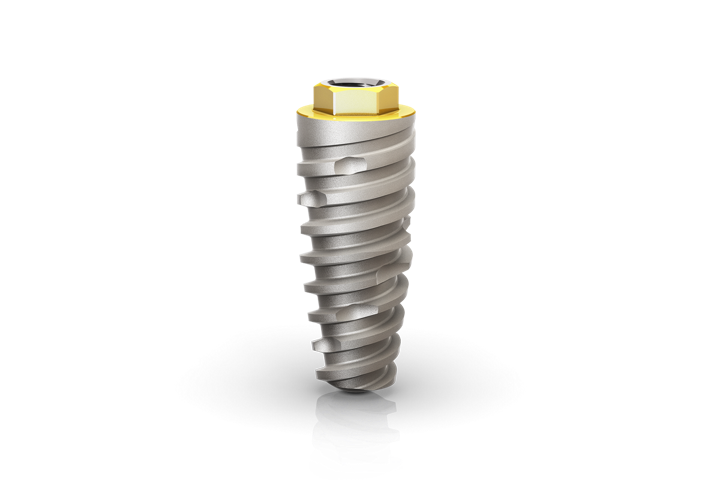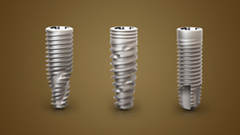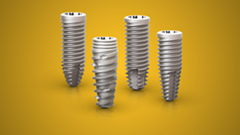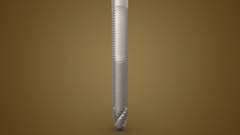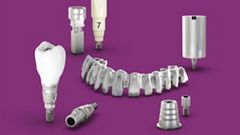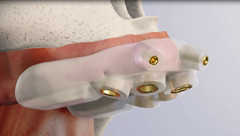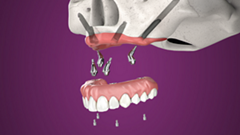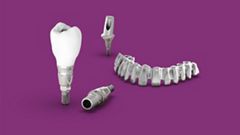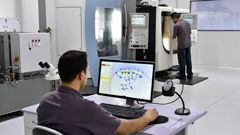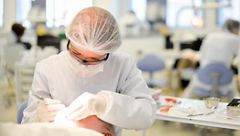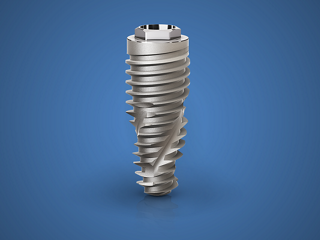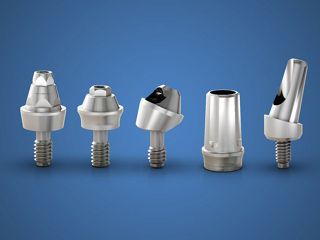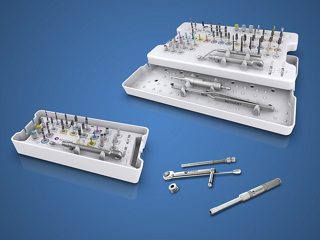• Large retrospective clinical study: 2,244 implants placed in more than 400 patients.(1)
• Long-term high survival rate: 99.7% after up to 5 years. (1)
• No early loss of implants was found in this study.(1)
• High predictability in full arch restorations (4 to 6 or more in the maxilla and 4 or 5 in the mandible) even with tilted implants.(1)
1. Sartori IAM, Latenek RT, Budel LA, Thomé G, Bernardes SR, Tiossi R. Retrospective analysis of 2,244 nimplants and the importance of follow-up in implantology. Journal of Research in Dentistry. 2014 Nov- Dez;2(6):555-564.
2. Martin C, Thomé G, Melo AC, Fontão FN. Peri-implant bone response following immediate implants placed in the esthetic zone and with immediate provisionalization-a case series study. Oral Maxillofac Surg. 2015 Jun;19(2):157-63.
3. Barros RR, Novaes AB Jr, Muglia VA, Lezzi G, Piattelli A. Influence of interimplant distances and placement depth on peri-implant bone remodeling of adjacent and immediately loaded Morse cone connection implants: a histomorphometric study in dogs. Clin Oral Implants Res. 2010;21(4):371-8.
4. Castro DS, Araujo MA, Benfatti CA, Araujo Cdos R, Piattelli A, Perrotti V, et al. Comparative histological and histomorphometrical evaluation of marginal bone resorption around external hexagon and Morse cone implants: an experimental study in dogs. Implant Dent. 2014;23(3):270-6.
5. Novaes AB Jr, Barros RR, Muglia VA, Borges GJ. Influence of interimplant distances and placement depth on papilla formation and crestal resorption: a clinical and radiographic study in dogs. J Oral Implantol. 2009;35(1):18-27.
6. Siqueira RAC. Avaliação do índice de sucesso e comportamento dos tecidos periimplantares de implantes cone morse equicrestais ou subcrestais em arcos inferiores. [master’s dissertation on internet]. [Curitiba(Brazil)]: ILAPEO; 2013. [cited 28 out 2015] 126p. Available from: http://www.ilapeo.com.br/ Monografias_e_Dissertacoes/Dissertacoes_turma2011/Rafael_Amorin_Cavalcanti_de_Siqueira.pdf
7. Sotto-Maior BS, Lima Cde A, Senna PM, Camargos Gde V, Del Bel Cury AA. Biomechanical evaluation of subcrestal dental implants with different bone anchorages. Braz Oral Res. 2014;28.
8. Coppedê AR, Bersani E, Chiarello de Mattos MG, Rodrigues RCS, Sartori IAM, Ribeiro RF. Fracture resistance of the implant-abutment connection in implants with internal hex and internal conical connections under oblique compressive loading: an in vitro study. Int J Prosthodont. 2009 May-Jun;22(3):283-6.
9. Bernardes SR, da Gloria Chiarello de Mattos M, Hobkirk J, Ribeiro RF. Loss of preload in screwed implant joints as a function of time and tightening/untightening sequences. Int J Oral Maxillofac Implants. 2014 Jan-Feb;29(1):89-96.
10. Jorge JR, Barao VA, Delben JA, Assuncao WG. The role of implant/abutment system on torque maintenance of retention screws and vertical misfit of implant-supported crowns before and after mechanical cycling. Int J Oral Maxillofac Implants. 2013 Mar-Apr;28(2):415-22.
11. dos Anjos CM, Harari ND, Reis RSA, Vidigal Junior GM. Análise in vitro da infiltração bacteriana na interface de pilares protéticos e implantes cone-morse / In vitro analysis of bacterial leakage at the interface between Morse taper implant platform and prosthetic abutments. ImplantNews. 2011 8(2):239- 243.
12. Sartoretto SC, Alves AT, Resende RF, Calasans-Maia J, Granjeiro JM, Calasans-Maia MD. Early osseointegration driven by the surface chemistry and wettability of dental implants. J Appl Oral Sci. 2015. May-Jun;23(3):279-87.
13. da Silveira BM. Análises tomográfica, microtomográfica e histológica entre enxertos em bloco autógeno e xenógeno nas reconstruções ósseas de maxila. [master’s dissertation on internet].[Curitiba(Brazil)]: ILAPEO; 2013. [cited 15 jun 2014] 133p. Available from: http://www.ilapeo.com.br/biblioteca-detalhe/ tomographic-microtomographic-and-histological-analysis-between-grafts-in-autogenous-andxenogeneic-- C162410.html
14. Mendonça G, Mendonça BD, Oliveira SL, Araujo AC. Efeitos da diferenciação de células-tronco mesenquimais humanas sobre superfícies de implantes hidrofílicas. ImplantNews. 2013 Nov-Dez 10(6a):111-116.
